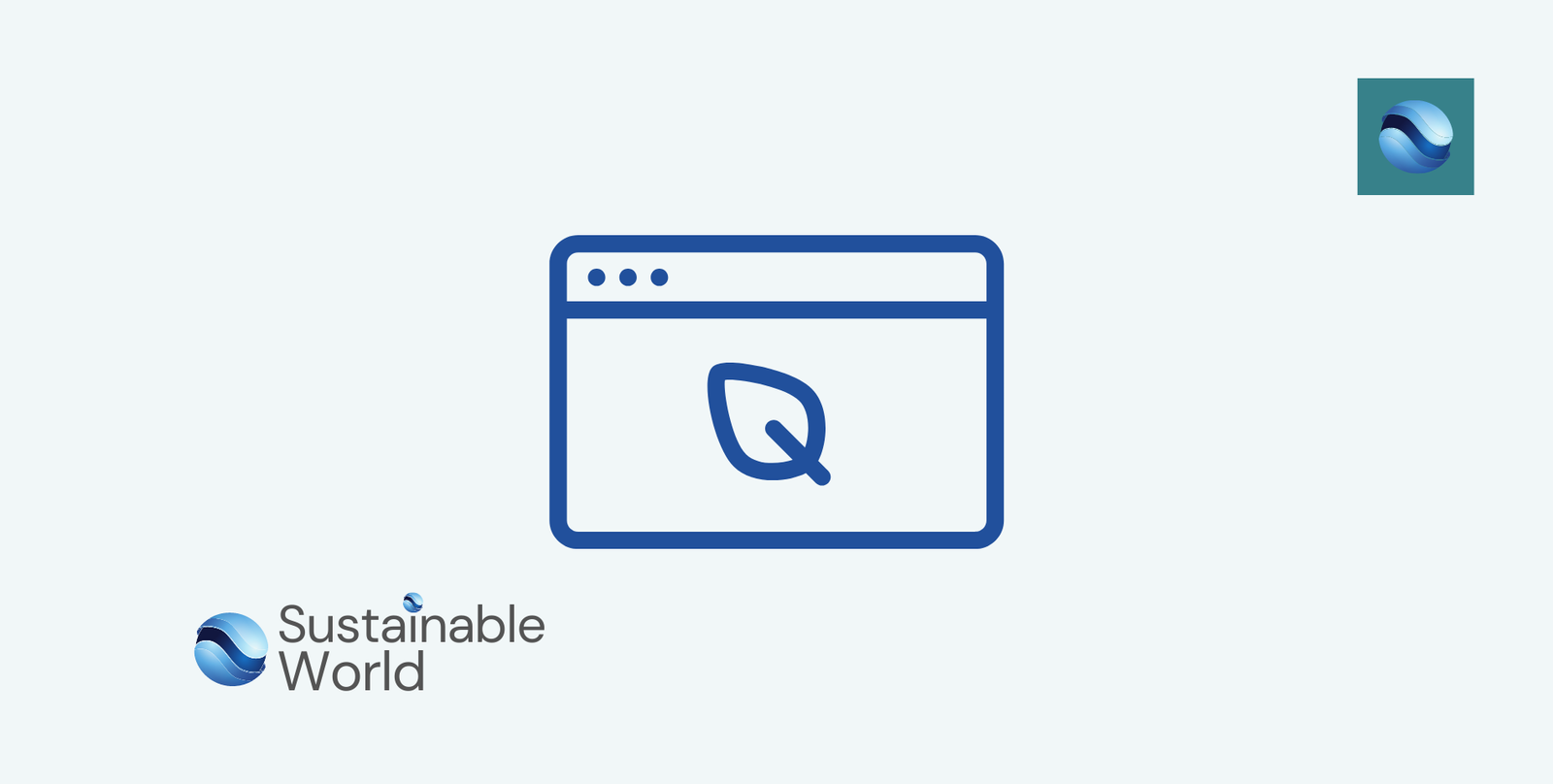In today’s digital age, where websites and online platforms have become an integral part of our lives, it is crucial to prioritize sustainability in web design. Sustainable web design refers to the practice of creating websites that have a minimal impact on the environment, both during their development and throughout their lifecycle. This approach focuses on energy efficiency, reducing carbon emissions, using eco-friendly materials, and promoting ethical practices. In this blog post, we will explore the importance of sustainable web design and discuss strategies to create a greener online experience.
The Importance of Sustainable Web Design
In recent years, there has been a growing awareness of the environmental impact of the internet.
From data centers consuming vast amounts of energy to the carbon emissions generated by website hosting, the digital industry has a significant ecological footprint. However, by embracing sustainable web design principles, we can mitigate these negative effects and contribute to a more eco-friendly online landscape.
Energy Efficiency
One of the key aspects of sustainable web design is optimizing energy efficiency. By reducing the amount of energy required to run a website, we can minimize its carbon footprint. This can be achieved through various techniques, such as:
- Compressing and minifying files: By reducing the size of CSS, JavaScript, and image files, we can decrease the amount of energy needed to load a webpage.
- Caching and content delivery networks (CDNs): Implementing caching and CDNs helps store and deliver website content closer to the user, reducing the distance it needs to travel and the energy required for data transfer.
Carbon Emissions Reduction
Another crucial aspect of sustainable web design is reducing carbon emissions. Websites can significantly contribute to carbon emissions through their hosting and server infrastructure. To minimize this impact, web designers can:
- Choose eco-friendly hosting providers: Look for hosting providers that utilize renewable energy sources, such as wind or solar power, to power their data centers.
- Optimize server configurations: Properly configuring servers and implementing load balancing techniques can reduce the number of servers needed, resulting in lower energy consumption.
Eco-Friendly Materials and Ethical Practices
Sustainable web design also involves using eco-friendly materials and promoting ethical practices throughout the website development process. Here are a few strategies to achieve this:
Responsible Material Selection
When designing a website, consider the environmental impact of the materials used. For example:
- Use sustainable web hosting: Opt for hosting providers that prioritize renewable energy sources and have strategies in place to minimize their environmental impact.
- Choose green design elements: Use eco-friendly alternatives, such as renewable energy icons or recycled paper textures, to create a visually appealing website without compromising sustainability.
Ethical Practices
In addition to eco-friendly materials, it is crucial to prioritize ethical practices in web design. Consider the following:
- Accessibility: Ensure your website is accessible to all users, including those with disabilities, by following WCAG (Web Content Accessibility Guidelines) standards. This promotes inclusivity and equal access to information.
- Privacy and data security: Implement robust privacy measures and data protection practices to safeguard user information and build trust with your audience.
The Benefits of Sustainable Web Design
Adopting sustainable web design practices offers numerous benefits, both for the environment and your business.
Here are a few advantages:
Environmental Benefits
- Reduced carbon footprint: By optimizing energy efficiency and reducing carbon emissions, sustainable web design helps combat climate change and minimize the ecological impact of the internet.
- Conservation of resources: By using eco-friendly materials and promoting ethical practices, we can conserve valuable natural resources and contribute to a circular economy.
Business Benefits
- Cost savings: Implementing energy-efficient practices and optimizing server configurations can lead to reduced energy consumption and lower hosting costs.
- Enhanced reputation: Embracing sustainability in web design demonstrates your commitment to environmental responsibility, attracting environmentally conscious customers and stakeholders.
Conclusion
In conclusion, sustainable web design is crucial for creating a greener online experience.
By prioritizing energy efficiency, reducing carbon emissions, using eco-friendly materials, and promoting ethical practices, we can minimize the environmental impact of websites and contribute to a more sustainable digital future. Embrace sustainable web design principles and make a positive difference in the online world.
It’s clear that creating an environmentally friendly and visually appealing digital presence is more crucial than ever. For those looking to take significant steps towards this goal, the award-winning Flow & Design emerges as a remarkable partner in this journey. Specializing in sustainable web design, their Web Design Subscription service is a testament to their commitment to blending aesthetics with environmental consciousness.
Flow & Design stands out by prioritizing performance, accessibility, and user engagement, all while adhering to sustainable web design principles. Their subscription model offers a seamless way to ensure your website not only meets but exceeds modern web standards, with the added benefit of ongoing updates, optimizations, and dedicated support. This approach guarantees that your site remains innovative, engaging, and, most importantly, sustainable over time.
Embracing a future where web design aligns with eco-friendly practices is easier with the right partner. Flow & Design is dedicated to crafting digital experiences that honor the planet without compromising on quality or user satisfaction.
Products
- Landing Page Design eBook – Master the art of creating high-converting, sustainable landing pages that enhance user experience.
- Art of Design: Timeless Techniques and Modern Trends eBook – Explore how timeless design principles can be applied to create visually stunning and eco-friendly websites.
- The Golden Ratio: Unveiling God’s Design eBook – Discover how to use the golden ratio to craft aesthetically pleasing and balanced web designs.
- Learn Design Basics eBook – A beginner-friendly guide to essential design principles for creating sustainable and impactful web experiences.



Leave a Reply